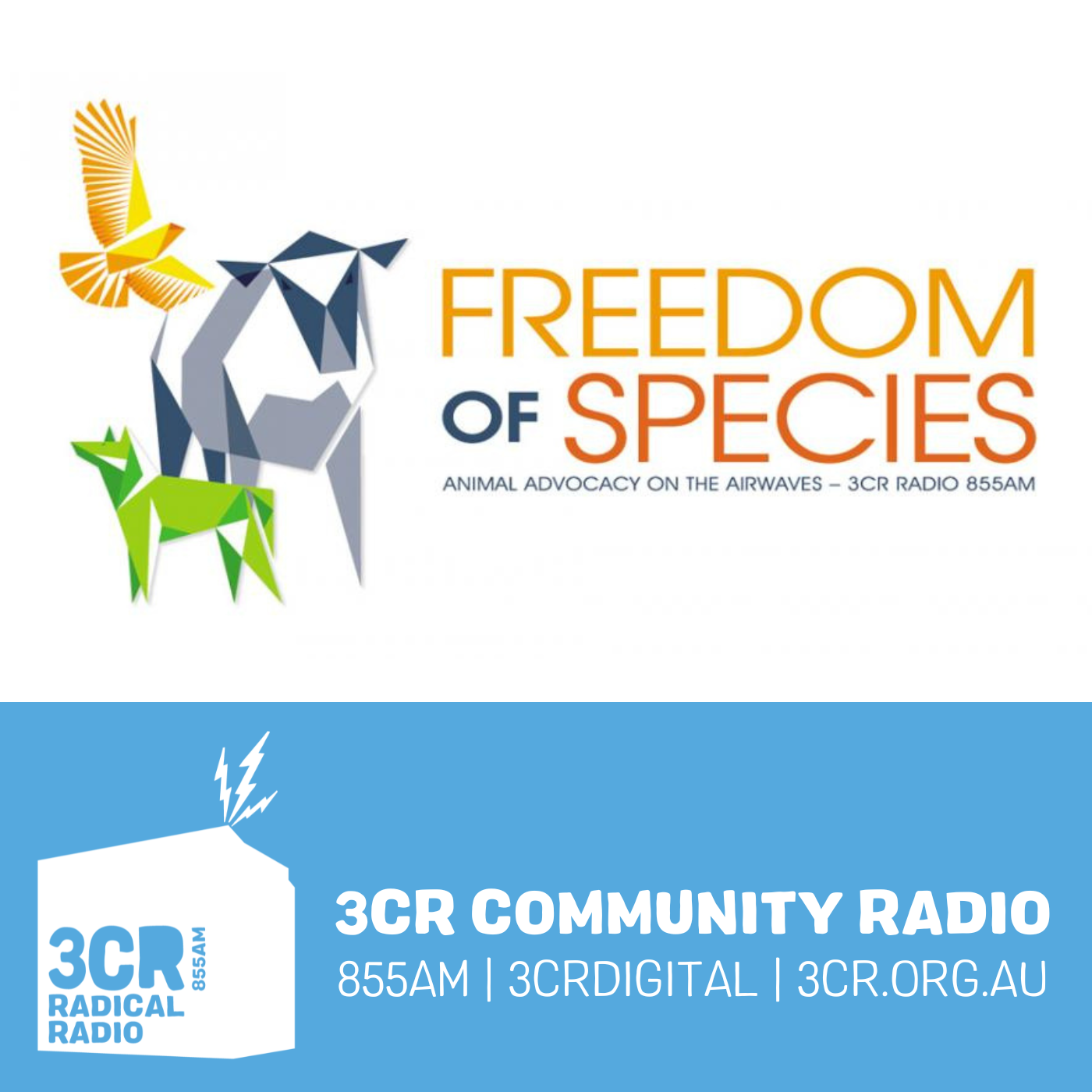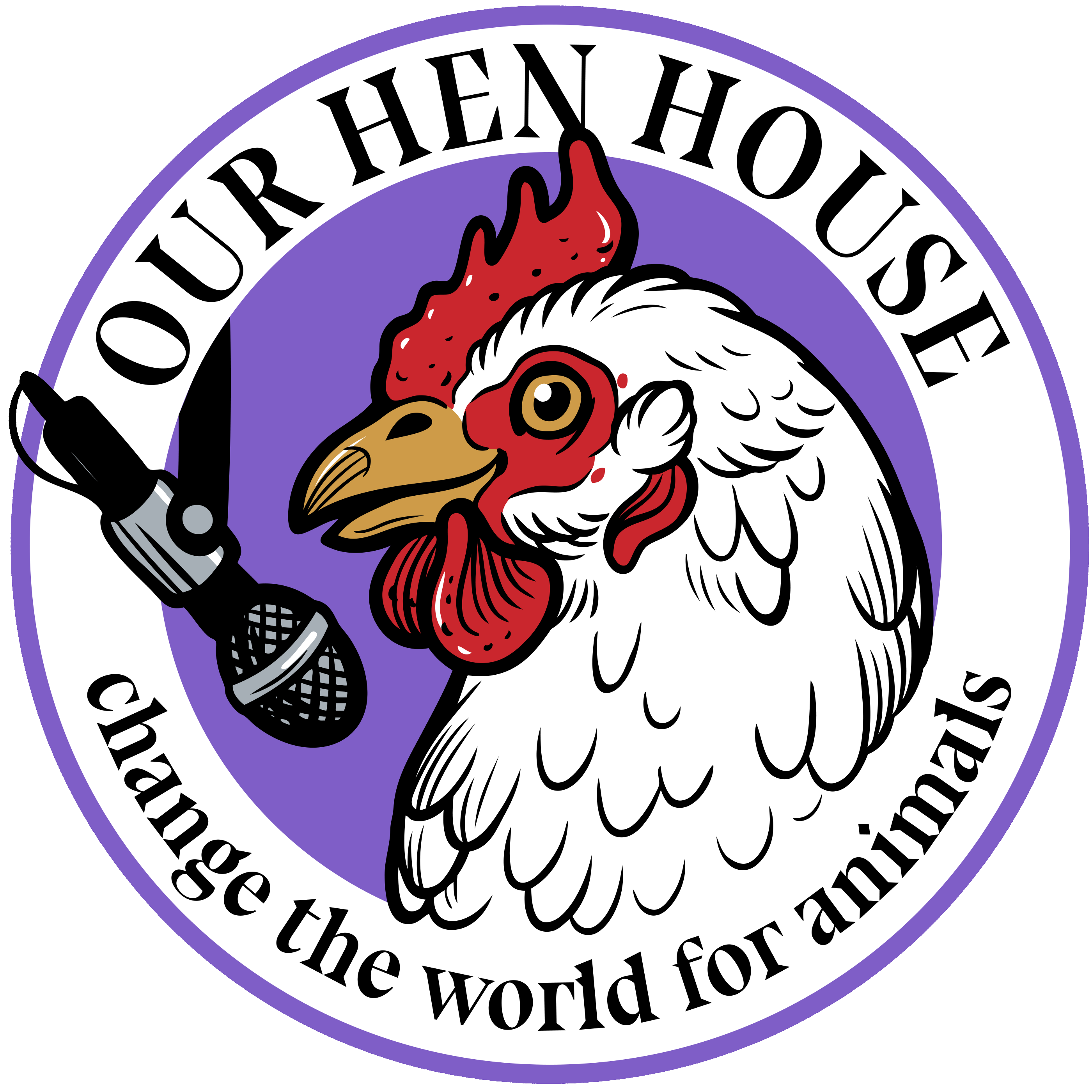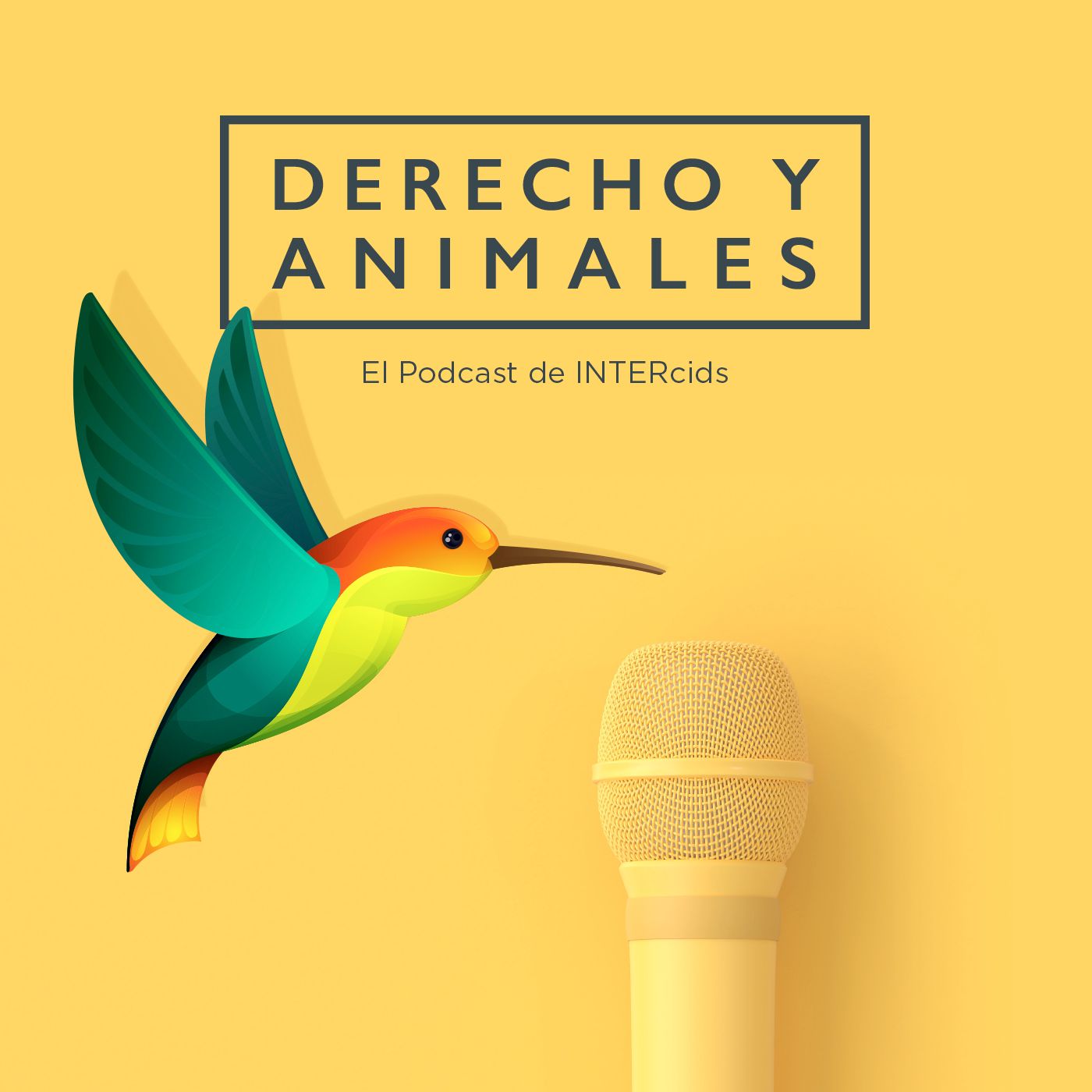
The Animal Turn
Animals are increasingly at the forefront of research questions – Not as shadows to human stories, or as beings we want to understand biologically, or for purely our benefit – but as beings who have histories, stories, and geographies of their own. Each season is set around themes with each episode unpacking a particular animal turn concept and its significance therein. Join Claudia Hirtenfelder as she delves into some of the most important ideas emerging out of this recent turn in scholarship, thinking, and being.
The Animal Turn
S3E5: Urban Metabolism with Catherine Oliver
Metabolism is an increasingly important concept in understanding how cities operate. Claudia chats with Catherine Oliver about the concept of urban metabolism and its usefulness in understanding the multiple scales of multispecies relations that are produced in and through urban living.
Date recorded: 3 May 2021
Catherine Oliver is a postdoctoral researcher, currently working on the ERC-funded project Urban Ecologies at the University of Cambridge, where she is researching urban backyard chickens and chicken-keepers in London. Her monograph, Veganism, Animals, and Archives is forthcoming with Routledge (August 2021). She is also a Wiley-Royal Geographical Society Digital Archives Fellow, researching animals as collaborators and workers in geographical knowledge production. Catherine’s other research is in feminist geographies, notably focussed on ‘dis-belonging,’ precarity, and the reproduction of neoliberal hierarchies at academic conferences. More information can be found on her website (https://catherinecmoliver.wordpress.com) and she can be found on twitter at @katiecmoliver.
Featured: City chickens: What the rise of urban hen-keeping might mean for veganism and Veganism, Animals, and Archivesby Catherine Oliver; Earthlings with Joaquin Phoenix;
We have a range of book titles to give away. To be entered into the draw share your favourite episode of The Animal Turn via social media and tag us. Competition ends on the 31st of December.
Nature DisturbedMother Nature is one weird lady
Listen on: Apple Podcasts Spotify
A.P.P.L.EAnimals in Politics, Law, and Ethics researches how we live in interspecies societies and polities.
iROAR Network
iROAR brings together podcasts that aim is to make the world a better place for animals.
Disclaimer: This post contains affiliate links. If you make a purchase, I may receive a commission at no extra cost to you.
The Animal Turn is hosted and produced by Claudia Hirtenfelder and is part of the iROAR Network. Learn more on our website.
- Leave a Review on Podchaser
- Check out The Animal Turn Merch.
- Support us on Patreon, Buy Me a Coffee, and Buzzsprout.
S3E5 - Urban Metabolism with Catherine Oliver
00:00 - Welcome and housekeeping
- “There’s 26 billion chickens. These chickens are fuelling our labor, they’re fuelling our work, they are fuelling the building of the city, the act of the city through humans eating chickens. So the commercial farm even though it is not in the city is part of that urban metabolism because it is producing the food on which the city is produced” – Catherine
- Addressing audio quality of last episode
- Brief introduction of topic: Urban metabolism
- Catherine Oliver Postdoctoral Researcher at ERC Funded Project ‘Urban Ecologies’ looking at urban chicken keepers in London. Monograph ‘Veganism, Animals, and Archives’ released August 2021.
02:50 - A bit about Catherine
- Undergraduate, Masters and PhD in Geography
- Veganism got Catherine thinking about animals after watching Earthlings
- Went to work in the British Library in her first year of her PhD which added a historical perspective on animal geography.
- Catherine’s mother adopted rescued hens which got her bonding, thinking, and writing about chickens making it a big part of her PhD research.
- Veganism on screens: Vegan documentaries entering mainstream while other representations takes jabs at veganism.
10:30 – How people get chickens
- Chickens as survivors, usually rehoming organisations that rescue chickens at the end of their productive lives (about 18 months) while they otherwise would be used for chicken nuggets, produced meats, or biofuel.
- Catherine Oliver now researches chicken flows: How do chickens end up where and what happens after they are sold by farmers to rehoming organisations.
- 12 to 14 pounds paid per chicken in the industry reveals the conflation of life and value. Of all the birds in the world, 70% of that biomass is chickens which adds up to 26 billion chickens alive at any time of which millions are being killed daily. So why do people not see chickens as a bird? Is the numbers of them turning them into a commodity?
18:06 - What do we mean when we talk about urban metabolism?
- Metabolism reminds Claudia of bodily metabolism: How quickly does a body use energy. What then is urban metabolism?
- Catherine: Urban metabolism works on two registers:
- First, the Conventional model: The urban as having its own metabolism in the sense that it brings in its own resources that it needs to function (food, air, water, etc.) while it also churns out waste as it consumes these resources as it lives and expands. This model renders the city as a closed ecological system with inputs and outputs which is common in debates such as Urban Political Ecology. In terms of the human body this standard model is referred to as industrial metabolism as written about by, for example, Hannah Landecker.
- Second, Post-industrial metabolism: Based on an increased knowledge of how metabolism works we now know that our bodies store parts of what we consume rather than turn them into outputs. This changes how we think about a city: Cities are more than industrial input-output machines but retain certain things in this process.
- Metabolism as a thinking point to think about what cities consume.
- [Check out Catherine’s blog post about this -
- Claudia: What misses in these conversations is responsibility. Once you recognize outputs, what is then the responsibility of that city?
26:30 - Chickens and Human Nutrution
- Catherine: Marxist idea of metabolic rift. A separation of humanity from nature and how society has become separated from nature understood through capitalism and commodification of nature.
- Chickens were similar to humans in terms of metabolic processes. Early 20th century research therefore focused on chickens to understand human metabolism. Agricultural science and nutritional science thus coincided in what both needed to eat.
- Distinction between two types of chickens is important:Broiler chicken bred to be big and fleshy and to get as big as possible as fast as possible. Layer chicken is bred to produce as many eggs as possible. Their metabolic labour is to turn inputs into outputs by consuming nutrients (e.g. vitamin D, omega 3) and turning them into eggs.
- “It makes it when humans are eating those eggs, they are getting more of those vitamins. But through the chickens’ metabolic labour, those vitamins are easier to absorb to the human body than if the supplements were given to us directly.” - Catherine
- We’re entangled in each others’ cellular biological makeup, chickens are doing this labour for us for [those nutrients] to be more easily absorbed.
32:00 - Where do the bodies go?
- Catherine: Urban metabolism is concerned with waste and how it not only goes out, but also how it goes back in. This led Catherine to think about closed systems. In chicken farming a closed system is an ideal as it would mean that all waste outputs become inputs. But that ignores all the pollution that it generates and puts out.
- Claudia: Why use urban metabolism as opposed to simply urban ecology? What is it that makes urban metabolism so useful for understanding these relationships?
- Catherine: It is in eating. Eating is not just a material thing, it is also a political and ethical thing. Annemarie Mol’s ‘I Eat an Apple’: What do we do when we eat an apple? Urban metabolism helps us trace multiscalar political and ethical flows from the origin to the moment of eating and past the point of eating.
- If you’re foregrounding eating, it opens up new actors that you can consider. Claudia: How can this be used to understand the urban world of (wild) animals?
- Catherine: Animals are also parts of the city, both as parts of metabolic flows but also as metabolisers themselves as they move, consume, and live in the city. So what does it mean if we look at their metabolism? This pulls in their history and questions about which animals are in the city and how did they end up living and thriving there.
40:15 - The more-than-human city and wildlife’s metabolism
- Urban traditionally seen as a place devoid of animals. The city facilitates close relationships with animals more than rural areas do.
- Documentary about cities as nature’s new wild. One episode on animals as residents (foxes in UK, otters in Singapore), one episode on commuters (brown bears in North America), and outcasts (dolphins). Nigel Thrift’s book on Killer Cities makes good points about how cities are deadly to animals, but cities can also be read as a playground for how humans and animals may live together in the future.
- atherine befriended a variety of animals throughout her life: A badger near her student halls in Birmingham who welcomed her into the city, a fox who slept in her garden that she talked with, gulls nesting on the roof opposite her flat.
- Claudia: If you open your eyes when you walk through the streets, animals are all around you which goes against traditional views. Media are changing this as there is an influx of documentaries that represent the city as an ecology.
47:50 - The act of eating as a way to understand animal choices
- What does the act of hanging out a bird feeder mean?
- Catherine: Homeowners are more likely to intentionally attract animals through feeding while renters tend to attract animals through waste. (Re)creating more-than-human communities through feeding practices creates ethical questions as one might not be able to stay in this community due to costs of living in cities.
- Do we have a right to a more-than-human city? People feed animals as a political community act because we know animals like to eat. But lots of us don’t have the financial means to stay in that community.
- Claudia: We all eat, but who do we eat with? Some animals are accepted to feed, but how do these feeding relationships emerge and how do we engage with them? Should we feed them because they struggle, or does this create a pattern of dependency? And how do we regulate access to waste as it both sustains and endangers animal lives?
- Which human communities have the luxury to build more-than-human communities?
55:00 – Chickens and Zoonotic Disease
- Urban chicken keeping was already on the rise in the UK and North America, and the pandemic only increased this demand for two reasons. People suddenly had more time to keep chickens in their backyard, and the stockpiling trend at the beginning of the pandemic urged people to look for self-sufficient food sources.
- This taught people to live with animals in cities in different ways which reframed the city as a space for chickens.
- Simultaneously, slaughterhouse workers were exposed to increased risks of contracting covid due to a lack of measures to keep them safe. The backyard chicken and the slaughterhouse chicken cannot exist without each other.
- Chickens have a close relationship with zoonotic diseases as they were both a risk factor for some while they offered a different way to connect with their food for others.
01:03:28 - Quote
- About urban metabolism, quote from Jason Moore: “Metabolisms are always geographical. Capitalist relations move through - not upon - space. That is to say through and not upon nature as a whole”
- About chickens, quote from Les Beldo: “Chickens labour are both the macro-biological and micro-biological levels. By eating, rooting, and laying eggs on one hand, and by metabolizing feed into eggs or animal flesh protein on the other, but they have the additional burden of enduring their own metabolic labour, of constantly feeling the effects of the cellular process within them that generate eggs at the rate demanded by capital. For a layer hen, this means producing and laying as much as one egg per day and experiencing its adverse effects”.
01:05:00 - Marxist metabolic rift
- Metabolism not just in the body but as scalable. Thinkers like Jason Moore and John Bellamy Foster are trying to use metabolism to move from humanity and nature to humanity in nature.
- Marxism and environmentalism are not at odds but go together as capitalism is not only acting upon nature but is part of nature itself, and urban metabolism reveals the processes through which this happens.
- Metabolic Rift – Bigger idea that metabolism is not just in the body, it is scalable
- These authors are using metabolic rift to understanding metabolism, capitalism, and natures
- Marxism and environmentalism are not necessarily at odds with each other.
- “Human labour works in and on nature to transform nature into commodities” – Catherine
- Interesting to think about metabolic rift and veganism
- Early vegans devastated by human separation from soil.
- Whose eating and pooing matters?
- What happens when we start to look at where other animal populations are concentrated?
- We always tend to privilege the growth of human populations. What does it look like to focus on other populations?
01:08:40 - Closing remarks
- Urban metabolism as grounding: Our bodily processes are meaningful, but some bodily processes are made to matter more.
- It highlights the scalability: It highlights what is going on inside, but you can also scale it up to a global scale and consider how they’re all connected.
- In an urbanizing age, flows are increasingly important to study to understand the city of the future while we face capitalism’s demands of space and time.
- Population increases are mostly talked about in terms of human populations, while animal populations and their consumption are often left out of the discussion. What happens when we start to consider where concentrations of other populations are? What does 2050 mean for chicken populations?
01:14:25 - What are you working on right now?
- Writing and other info can be found at https://catherinecmoliver.wordpress.com.
- Twitter: @katiecmoliver
- Instagram: vegangeographies
01:15:45 - Animal Highlight (Chickens)
- Quote from Paul Auster’s book ‘I Thought My Father Was God: And Other True Tales’
- Various chicken facts about their lifespan, biological capacities, social relations, and dinosaurs.
- Chickens have complex social lives, see in full colour and have at least 24 different vocalizations
- They are the closest living relative to T-Rex
- Can live to be 11 years old but are often killed at 40 days
Show notes by Herre de Bondt, fellow with the Animal Turn
Podcasts we love
Check out these other fine podcasts recommended by us, not an algorithm.

The Animal Highlight
Claudia Hirtenfelder
Knowing Animals
Josh Milburn
Species Unite
Species Unite
The Deal With Animals with Marika S. Bell
Marika S. Bell
The Other Animals
Laurent Levy
Beyond Species
Beyond Species
The Anthrozoology Podcast
Anthrozoology Podcast
Freedom of Species
The Freedom of Species Team
Our Hen House: Vegan & Animal Rights Movement | Stories from the Frontlines of Animal Liberation
Jasmin Singer and Mariann Sullivan
Derecho y Animales
Derecho y Animales
Storytelling Animals
Dayton Martindale
Species
mackenmurphy.org
Animal Law Matters
K & R Animal Law
The Humanimal Connection
Humanimal Trust
The Animal That Changed You
Katya Lidsky
Think Like a Vegan
Emilia Leese
The Shifting Lens: Viewing the Animal Experience
Tiamat Warda Rebecca Madrid
The Salmon People
Canada's National Observer
Comme un poisson dans l'eau
Victor Duran-Le Peuch

